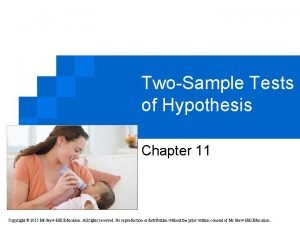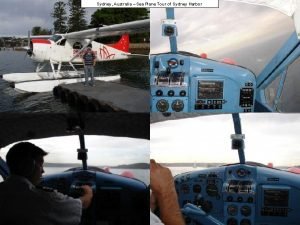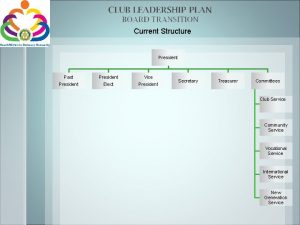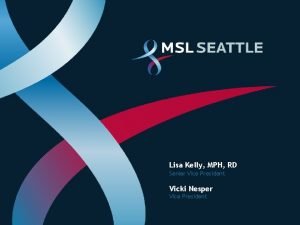Vicki Evans WFNN Vice President Sydney Australia Vicki













- Slides: 13

Vicki Evans WFNN: Vice President Sydney, Australia. Vicki. Evans@health. nsw. gov. au THE DANGERS OF HIGH ALTITUDE CLIMBING.

Mt Kosciuszko

Barometric Pressure = a measurement of the air’s force against a surface. o Low elevations: the pressure is greater, since the molecules of air are compressed from the weight of the air above them. BUT… o Higher elevations: there's less pressure and the molecules are more dispersed. o The % of oxygen at sea level is the same as at high altitudes 21%. But because the air molecules are more dispersed, each breath delivers less oxygen to the body. o A breath at 12, 000 feet (3, 657. 6 m), is 40% less oxygen than at sea level. At 18, 000, feet it’s 50% less.

Physiology • As O 2 pressure decreases, breathing & heart rate increase, as does the hearts’ contractility & force of contraction. • RBCs increase in size & production. • Increased urination & sweating = Dehydration • Polycythemia + dehydration maybe risk factors for sludging of blood in small vessels TIAs. • Cerebral damage is due to disruption to the BBB.

P 02 mm/Hg 40 Altitude(m) 9000 8000 50 7000 Extreme Altitude Above 7, 000 m – • Hallucinations • MRI changes • Memory retrieval impaired • Loss of consciousness 100 4000 3000 2000 150 1000 0 High Altitude 5000 Very High Altitude 6000 • • Learning & spatial memory impaired Dizziness & tingling Exertional dyspnoea Psychomotor impairment Reaction time slows Altered sleeping patterns & frequent waking at night Altered night vision Commercial aircraft are pressurised to an equivalent of 1500 -2500 m

What causes altitude sickness? Ascending faster than 300 m per day … and … Vigorous exercise… * Physically fit individuals & athletes also get altitude sickness.

Acute Mountain Sickness (AMS) • = the body’s response to low oxygen pressure (“thinner air”) at high altitudes. • Mild symptoms, 2200 -2500 m above sea level - ski resorts. • Symptoms vary & is related to the rate of ascent (> 300 m/day) & how long the person is at that height. • Like a hangover - headache, nausea & fatigue. • Can happen regardless of how fit or experienced the climber is. • Can lead to life threatening HAPE & HACE.

High Altitude Pulmonary Edema (HAPE) • Excess fluid on the lungs causing dyspnoea. • It is never normal to feel breathless at rest - even on the summit of Everest!

High Altitude Cerebral Edema (HACE) • Potentially fatal metabolic encephalopathy associated with a time-dependent exposure to hypoxia at altitude. • A form of vasogenic edema • Neurological manifestations – persistent severe headache, confusion, clumsiness, ataxic, fatigue, irritability, vague, visual disturbances, photophobia, seizures, CN III & VI palsies, extreme emotion, loss of consciousness …. . death. • DESCENT is the most successful treatment.

Prevention of AMS • AMS occurs by going too high, too quickly. • Need to acclimatise – give the body time to adjust to altitude. • Sleep at an altitude LOWER than the altitude you were at during the day. • Drink plenty of water (avoid alcohol). • Acetazolamide (Diamox). • ? High carbohydrate diet • ? gingko biloba.

MRI - Cerebral Edema 33 yr old male after evacuation from Mt Denali. NB: leaked fluid - at high altitude from capillaries, rather than swollen cells.

Treatment of HACE & HAPE • Immediate descent! • Only one drug is currently known to prevent AMS and to be safe for this purpose: Acetazolamide (diamox). It causes some minor side effects - tingling fingers and a funny taste. • ? Dexamethasone • Pressure bags (Gamow) and oxygen can buy time

Introducing… Abhijeet Gorhe Clinical Research Coordinator, UC Davis Medical Center.
 Ducks unlimited checks
Ducks unlimited checks Vicki evans
Vicki evans Senior regional vice president
Senior regional vice president Mary jo fitzpatrick is the vice president
Mary jo fitzpatrick is the vice president Vice president training
Vice president training Lee tait
Lee tait Senior regional vice president
Senior regional vice president Senior regional vice president
Senior regional vice president Microsoft fargo campus
Microsoft fargo campus Vpm membership
Vpm membership Senior regional vice president
Senior regional vice president Mark welb
Mark welb Ffa advisor owl
Ffa advisor owl Vice president duties in a club
Vice president duties in a club

























